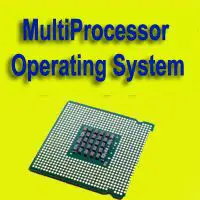
There are two general approaches to load balancing: push migration and pull migration. It is also important tonote, however, that in most contemporary operating systems supporting SMP,each processor does have a private queue of eligible processes. On systems with a common run queue, load balancingis often unnecessary, because once a processor becomes idle, it immediatelyextracts a runnable process from the common run queue. It is important to note that load balancing is typically onlynecessary on systems where each processor has its own private queue of eligibleprocesses to execute. Load balancingattempts to keep the workload evenly distributed across all processors inan SMP system. Load Balancing :-On SMP systems, it is important to keep the workload balanced among allprocessors to fully utilize the benefits of having more than one processor.Otherwise, one or more processors may sit idle while other processors havehigh workloads along with lists of processes awaiting the CPU. When an operating system has a policy of attempting to keep a process running on the same processor but not guaranteeing that it will do so we have a situation known as soft affinity. This is known as processor affinity, meaning that a process has an affinity for the processor on which it is currently running. Because of the high cost of invalidating and re-populating caches, most SMP systems try to avoid migration of processes from one processor to another and instead attempt to keep a process running on the same processor. Now consider what happens if the process migrates to another processor: The contents of cache memory must be invalidated for the processor being migrated from, and the cache for the processor being migrated to must be re-populated. The data most recently accessed by the process populates the cache for the processor and as a result, successive memory accesses by the process are often satisfied in cache memory. In the remainder of this section, we will discuss issues concerning SMP systems.
MULTIPLE PROCESSING OPERATING SYSTEM MAC OS
Virtually all modern operating systems support SMP, including Windows XP, Windows 2000, Solaris, Linux, and Mac OS X.
MULTIPLE PROCESSING OPERATING SYSTEM UPDATE
If we have multiple processors trying to access and update a common data structure, the scheduler must be programmed carefully: We must ensure that two processors do not choose the same process and that processes are n&t lost from the queue. Regardless, scheduling proceeds by having the scheduler for each processor examine the ready queue and select a process to execute. All processes may be in a common ready queue, or each processor may have its own private queue of ready processes. This asymmetric multiprocessing is simple because only one processor accesses the system data structures, reducing the need for data sharing.Ī second approach uses symmetric multiprocessing (SMP), where each processor is self-scheduling. The other processors execute only user code. One approach to CPU scheduling in a multiprocessor system has all scheduling decisions, I/O processing, and other system activities handled by a single processor-the master server.




 0 kommentar(er)
0 kommentar(er)
